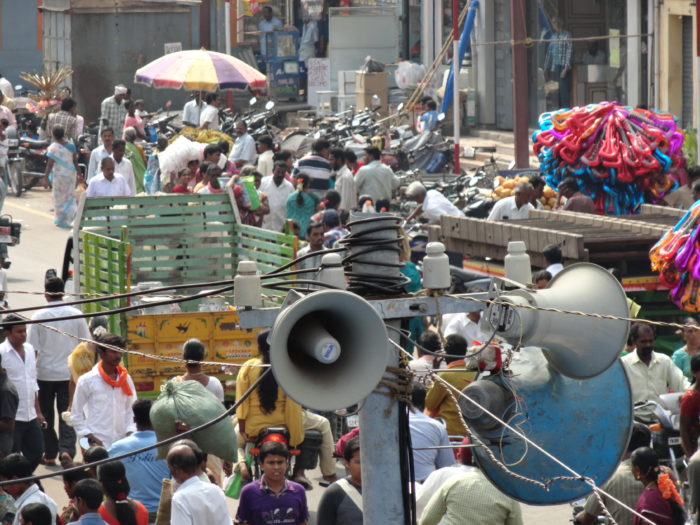Any disturbing or excessive noise is described as noise pollution. Noise is loud, non-harmonious vibration that is unpleasant to hear. The intensity of a sound is measured in decibel (dB) and there is a decibel scale to measure noise pollution and its levels. Sound intensity up to 20 dB is considered as a whisper. According to the World Health Organization (WHO), sound intensities which are less than 70 dB are not damaging for the living organisms, regardless of how long or consistent the exposure is. Exposure for more than 8 hours to constant noise beyond 85 dB may be hazardous.
| Aspirants can cover the topics mentioned in the UPSC Syllabus by following the below-mentioned links: |
Noise Pollution- Causes & Effects (UPSC Notes):- Download PDF Here

Noise Pollution is an important topic for the IAS Exam. This article will talk about the causes and effects of noise pollution.
Candidates preparing for UPSC 2023, can also download the notes PDF at the end of this article.
Causes of Noise Pollution
Noise pollution has become a matter of concern due to the increasing noise around which is mainly caused by vehicles, aircraft, industrial machines, loudspeakers, crackers etc. and can have too many ill-effects on life. Some of the major sources that contribute to noise pollution are as follows:
- Industrialization: The growing industries in the urban areas are a major cause of noise pollution these days which uses various machines that are capable of generating a large amount of noise.
- Improper Planning of Urban Areas: Improper and poor urban planning plays a major role in creating noise pollution, mostly in developing countries due to congested houses, small space, poor parking facilities and frequent fights over basic amenities which disrupts the environment of society.
- Social Events: In several social events, songs are often played on full volume by the people which makes the living condition pretty worse thus creating noise pollution. Weddings, public gatherings involve loudspeakers to play music resulting in the production of unwanted noise in the neighbourhood.
- Vehicles and transportation: Increased number of vehicles on the roads is one of the reasons for noise pollution. For example, traffic jams, underground trains, aircraft, etc produces heavy noise which may lead to a situation of hearing disability.
- Construction Sites: Various construction activities which include mining, construction of bridges, dams, buildings, etc contributes greatly to creating noise pollution.
Similar Articles:
| Air Pollutants | Central Pollution Control Board (CPCB) |
| Pollution Measurement – Air Quality Index | Smog |
| National Clean Air Programme | Air Act of 1981 |
Effects of Noise Pollution
The main sources of noise pollution in residential areas include loud music, transportation, construction, electrical generator and people. Noise pollution causes several ill-effects on life such as fatigue, permanent hearing disability and mental disorders.
- Hypertension: Longer exposure to loud noise result in elevated blood levels which can cause hypertension in humans.
- Hearing Disability: Constant exposure to loud noise which is beyond the range of normal sound intensity can damage the eardrums, thus resulting in hearing disability.
- Sleeping disorders: Noise pollution can also affect the sleep cycle of an individual which may lead to sleeping disorder, low energy level and fatigue.
- Cardiovascular issues: Loud noises also results in an increase in normal blood pressure level and causes several cardiovascular diseases in a normal person.
Control of noise pollution
- Highway traffics should be diverted through bye-passes and over-bridges and should not be allowed to pass through the towns and cities.
- Sound-proof chambers should be installed for the machines generating loud noise.
- To provide protective devices like ear muffs or cotton plugs to the workers who work in various industries and construction sites.
- To enforce acoustic zoning by distancing human settlements from industrial areas, aerodromes and railway stations.
- Silence zones should be created for educational institutes, hospitals and important offices.
Noise Pollution- Causes & Effects (UPSC Notes):- Download PDF Here
Related links:
Comments